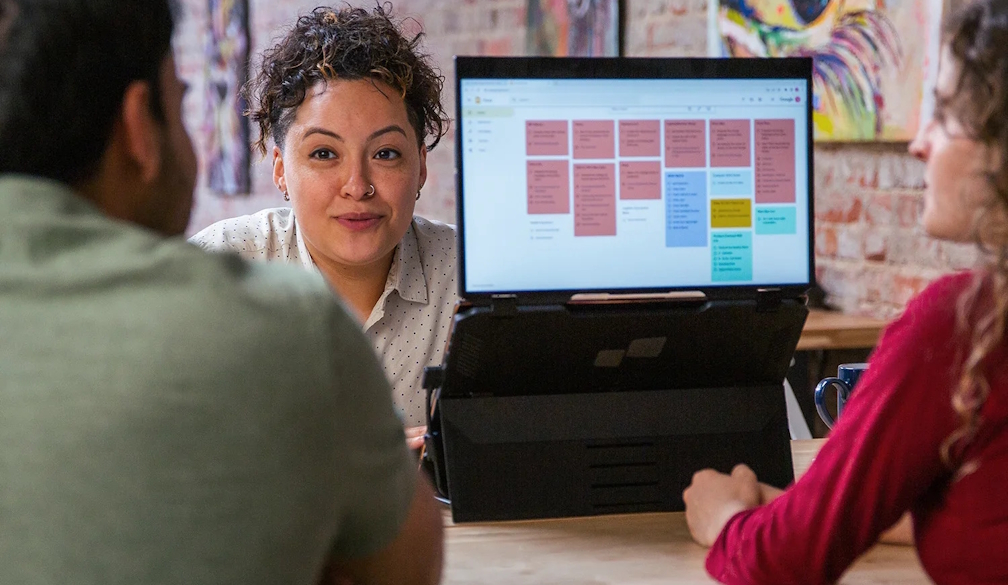How parents and teachers can help kids cope
- Written by Christine Grové, Educational and Developmental Psychologist & Academic, Monash University

With COVID-related school closures and long periods of remote learning, many kids across Australia have not physically been at school for most of the past two years. Because of the time away, some children might get extremely upset about going back[1], some might try to avoid school, while others – at the more severe end – might refuse to go to school altogether.
But where an illness or health problem is not present, it is important to continue to expect your child to be at school.
Kids who struggle going back to school may:
- be anxious or fearful that “something bad” might happen when they return to school
- complain about issues with other students or teachers
- refuse to leave the house to go to school
- report feeling sick and regularly visiting the nurse or sick bay.
Sometimes complaining of illness or pain can be a way children communicate their worries or anxieties. It is important to help them recognise there are other ways to cope with these feelings.
It’s also important to step in quickly. Missed schoolwork and social experiences snowball, making school avoidance a problem that grows bigger and more difficult to manage.
Here’s how you and your child’s school can help.
1. Create a back to school plan
The first thing to do is talk to your child to find out if anything at school is stopping them from wanting to go. Then talk to their teachers: explain why your child might not want to go – for example bullying, learning difficulties or mental health concerns. Discuss how this is affecting your child. You could ask the school about any strategies they are using or ones they could recommend.
Also, listen to children carefully about what their main worries and concerns are, and what other ways they can tackle problems. Do they feel comfortable asking for help when they are at school? And if not, how can that be better facilitated? For instance, using a card or ticket system the child can exchange for help without having to ask.
Then, with your child’s school, you can set up a back to school plan[2]. Organise a gradual start back. For example, your child might be able to start with a shorter school day or with their favourite subjects, and build up from there.
Read more: 5 tips to help ease your child back into school mode after the holidays[3]
Check to see if there are support staff, like a student well-being officer, school psychologist or counsellor, who can help your child. Ask for regular progress updates on how your child is going.
2. Help your child be more connected
You might also want to include in the plan ways to help increase your child’s sense of belonging to the school[4]. Studies[5] show student anxiety and feelings of not belonging are closely linked. Relationships with teachers and other students are central to feeling a sense of belonging.
If your child is having significant difficulties with attending school, one way to assist could be to help them connect more with their teachers or a staff member. For instance, a teacher could greet them at the gate in the morning. They could also give them a special job to do when arriving such as watering a plant or setting up a classroom.
To can help increase your child’s sense of connection to peers[7], you could:
-
organise to have another student, perhaps a peer or friend, meet your child in the morning and walk together to the classroom
-
help your child facilitate social interaction with other students particularly if they are having trouble doing this on their own. You might inquire if they have friends at school or if they are playing with others at break times
-
look out for opportunities for play dates with peers during holidays, on weekends or after school. Building friendships in informal play-based ways can help buffer some of the worries a student might have when they are at school.
3. Plan helpful transitions
To help kids transition from home to school, parents and teachers can:
-
put together a box of calming items for students in the early or primary years to go to in a different area (like a quiet space in the library) before going into the classroom. Research shows children can use familiar items as distractions[8] to calm their nerves in stressful situations
-
have a clear transition routine between parents and teachers that is followed each day. A teacher meeting the child at the gate can be part of this routine.
At home, parents can try to:
-
reduce the stress and hurry of morning routines. If you can, lay out uniforms the night before, and pack lunch boxes too
-
keep the child connected to the school. For instance, if they don’t go to school for a day, ensure they do some school work at home
-
reinforce school is a safe place
-
identify key people at school the student can go to for help (such as five trusted adults).
What if all this doesn’t work?
If these strategies don’t work, and if your child struggles to go to school for weeks or months, an evaluation from a health-care professional, like an educational and developmental psychologist[10], can help identify if there are more serious concerns at play.
School refusal[11] is a term used to describe children who have ongoing concerns with attending school. Consistently not going to school can be associated with separation anxiety, depression, panic disorder[12] or a specific phobia around attending school.
Only 1-5% of students experience genuine school refusal and they often require therapy, support, medication, or ongoing accommodations to help them.
Read more: So your child refuses to go to school? Here's how to respond[13]
In severe cases, other options of schooling may best be suited, like a variation in a school day or homeschooling[14].
It’s also important to remember children can pick up when their parents are feeling nervous and this can exacerbate their own anxiety. So a big part of the transition process is for parents to model good coping strategies. With time, children will benefit from observing that stress and worry are a part of life, and will hopefully develop their own ways to cope.
There is a different solution for each child, and progress can be slow. Try to be patient too – some children can take a few weeks to adjust. But they will likely be making progress each day, and building the confidence they need to get back to school regularly without the nerves.
If this article has raised concerns for you or someone you know, you can call Kids Helpline on 1800 55 1800, Beyond Blue on 1300 22 4636, or Lifeline on 13 11 14.
References
- ^ get extremely upset about going back (www.health.harvard.edu)
- ^ back to school plan (raisingchildren.net.au)
- ^ 5 tips to help ease your child back into school mode after the holidays (theconversation.com)
- ^ sense of belonging to the school (www.psychologytoday.com)
- ^ Studies (link.springer.com)
- ^ Shutterstock (www.shutterstock.com)
- ^ sense of connection to peers (www.psychologytoday.com)
- ^ children can use familiar items as distractions (acamh.onlinelibrary.wiley.com)
- ^ Shutterstock (www.shutterstock.com)
- ^ educational and developmental psychologist (psychology.org.au)
- ^ School refusal (www.racgp.org.au)
- ^ separation anxiety, depression, panic disorder (www.sciencedirect.com)
- ^ So your child refuses to go to school? Here's how to respond (theconversation.com)
- ^ homeschooling (theconversation.com)

















